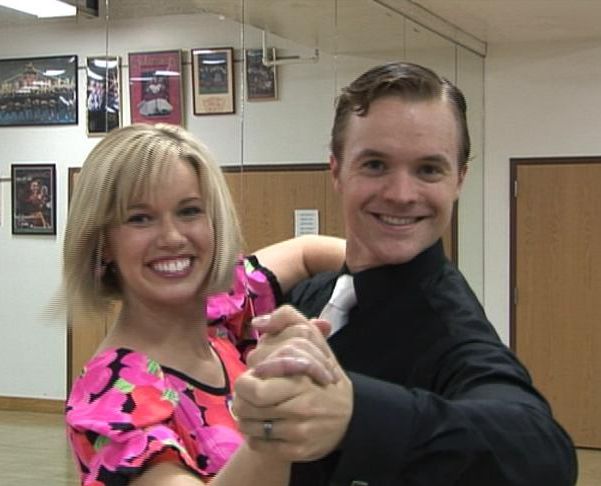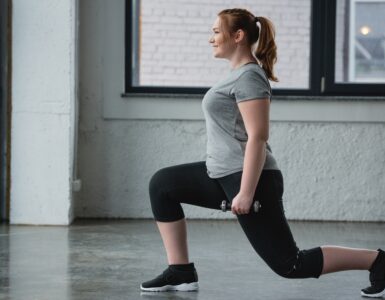Studio 5’s Brooke Walker took on the challenge…learn from her experience and consider the tips provided by Linda Wakefield, Director of the BYU Ballroom Company.
A few things to consider before your first ballroom class…
1. What style of ballroom dancing do you want to learn? There are 2 different styles of Ballroom Dancing.. Social Dancing and Competitive Dancing. The social dancing is geared more to the American Style and the competitive dancing is more towards what we call International Style dancing. Within each style, you have basically the Latin dances (Cha-Cha, Rumba, Samba, Swing, Jive, Paso Doble, Bolero, Mambo) and then you have the smooth dances (Waltz, Tango, Viennese Waltz, Foxtrot and Quickstep). So there are a lot of choices.
2. You need to find a good teacher. Finding the right instructor will determine the kind of experience you will have. You need to make sure they have teaching credentials or have at least had some teaching experience. There are numerous people who call themselves “Professionals” but are perhaps only a few steps ahead of you. Great dancers are not always great teachers so get references. Studios generally have trained teachers but it doesn’t hurt to ask about their credentials. After all, it’s your money and you want to get your money’s worth. When learning a physical skill, I personally want someone who has competed with that skill or someone who has taught for at least a year. There are also personalities to consider so make sure you have a good fit.
3. What are your goals? This is a hard question that most beginners have no idea about. They just want to learn to dance. That is okay too, but after a few lessons, some questions to ask are…what am I preparing for? Do I just want to learn the samba for fun of it or do I need to learn the waltz for my wedding reception? Knowing the future goal will not only help you financially, but the teacher can also gage their instructions accordingly. It helps to know what your time line is because a teacher can really push you with multiple lessons, or take it nice and easy. Your learning curve will also determine the speed at which you can handle new instruction. If you are a competitor, there is a lot expected and this often takes you to another level of training.
4. What is your partner situation? If you are coming solo, a studio situation will teach you one on one. Your teacher becomes your partner and if you want to even compete eventually, you can dance in what is called the “Pro-Am” division. There are competitions every week somewhere in the country where teachers take their students to compete. This is expensive and the student is required to pay entry fees, hotel, and instruction leading up to the competition. This is not the only scenario. Some couples come in together because they are preparing for a wedding, anniversary celebration, etc. This can be a fun experience but know always that people learn differently and opinions vary between partners. Learning to work together is always a challenge, but can strengthen your relationship or destroy it. Dancing evokes many emotions so beware. If it is your boy friend, make sure he is not just doing this for you, but for him as well.
5. What is your budget? I ask this question, because dancing can be addictive and you just can’t get enough of it. Ask ahead of time what the rates are and for how long the lessons run. It never hurts to ask if there are any discounts for taking multiple lessons. If you know your goals, that will determine either the short term experience or the long term. Either way, there is nothing more aggravating than take a lesson and expecting to pay one amount and it turns out to be more expensive.
A special thanks to Dance Works in Orem for providing dance shoes and attire.
Dance Works
3228 N University Ave
Provo, UT 84604
(801) 375-4622















Add comment